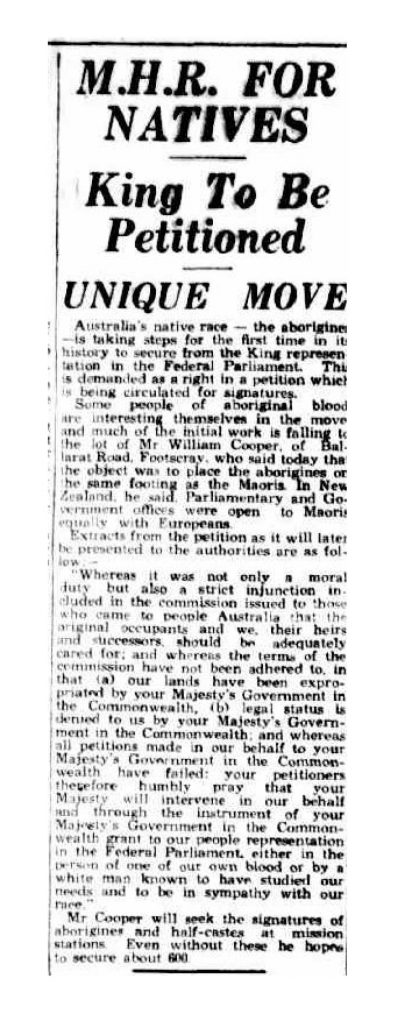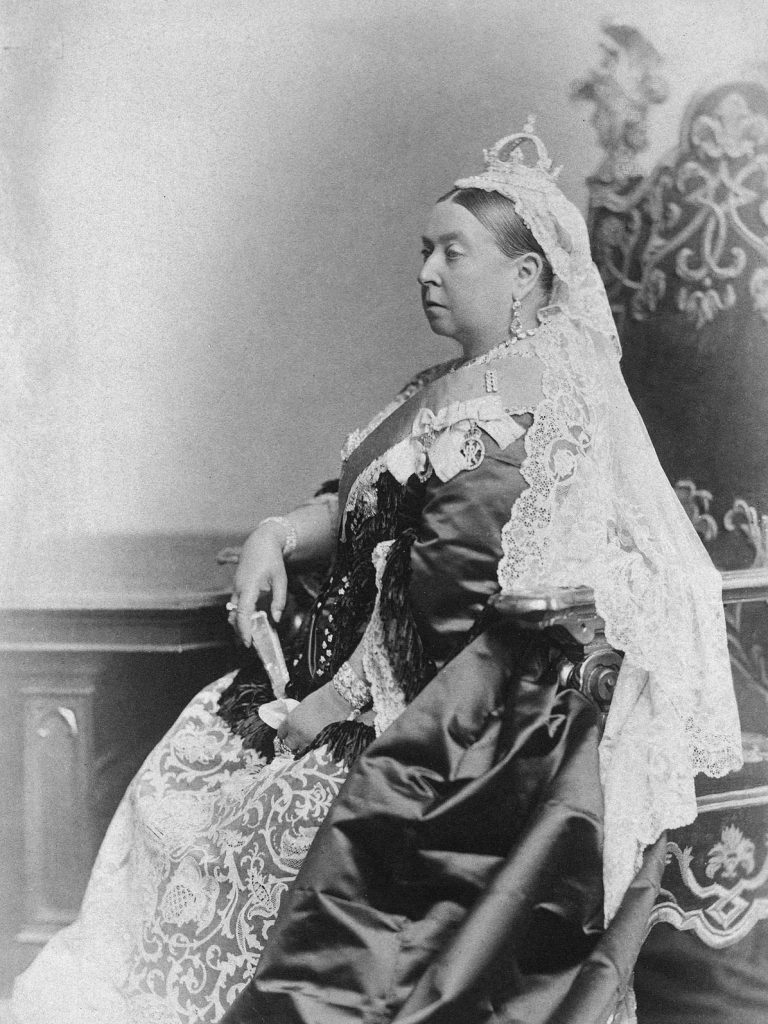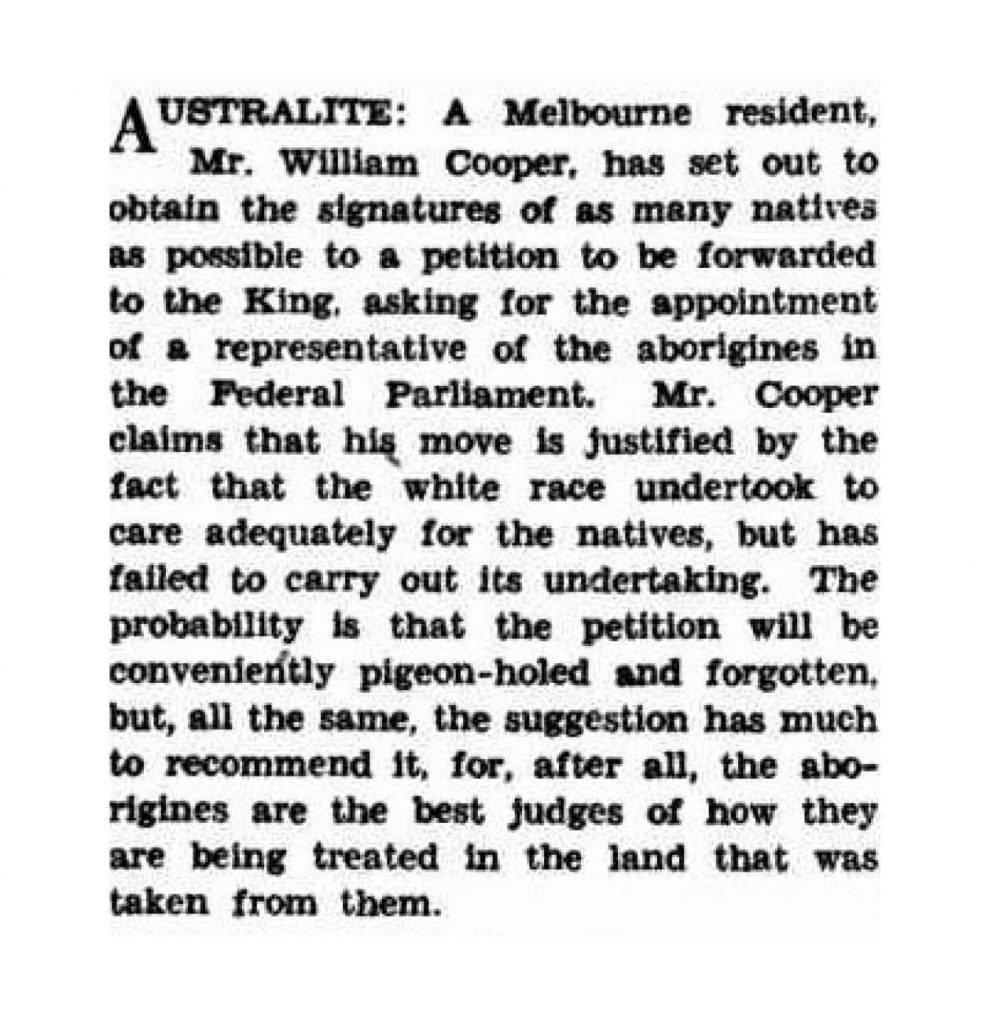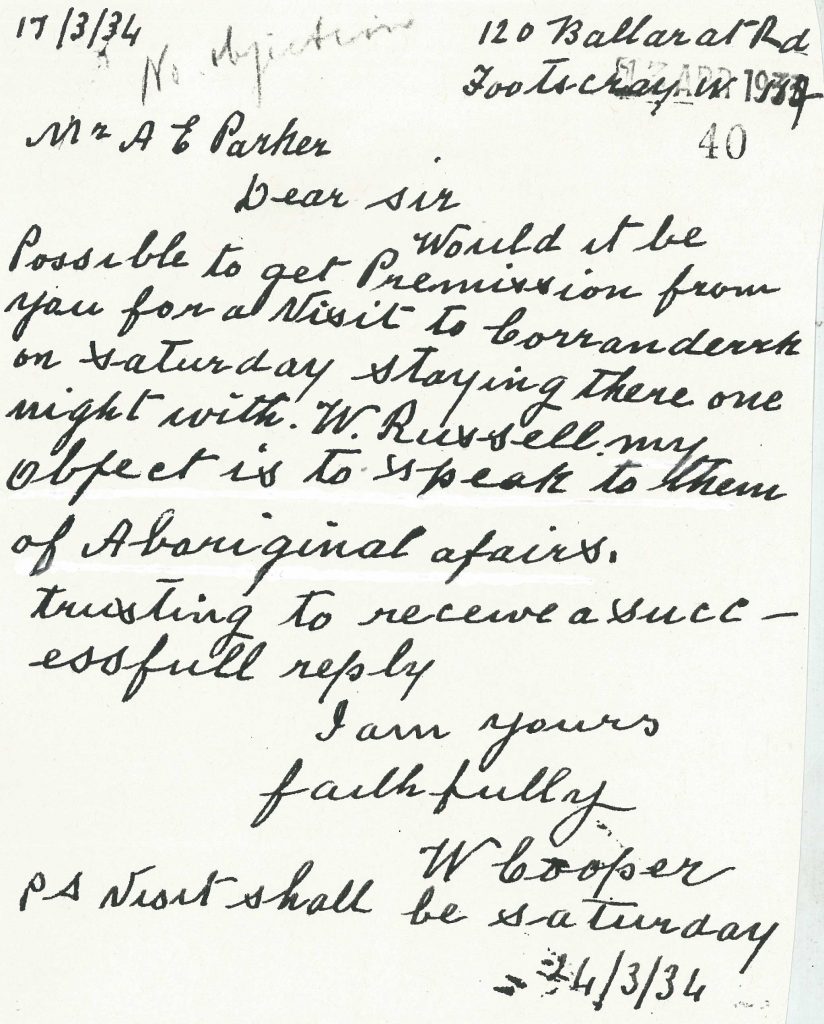The Petition to the King
(1933–1935)
Soon after Cooper began his political work in Melbourne in 1933, he decided that the best means of advancing his people’s cause would be to petition the current British king, George V. This petition became Cooper’s most important campaign.
We do not know who actually drew up the petition for Cooper, but it might have been Thomas Shadrach James. He had previously drafted several petitions for Cooper’s people, a number of which Cooper himself had signed.
The most important claim in the petition, as far as Cooper and his Aboriginal associates were concerned, was its call for representation in the federal parliament. Cooper saw this as a means of ensuring that the Commonwealth government was aware of the views of Aboriginal people. He held that the views of whitefellas were very different because they were unable to ‘think black’. Given this belief, it is probably not surprising that Cooper decided that he and his nascent organisation should only seek the signatures of Aboriginal people for the petition.

Petitioning the British monarch

It was (and is) common for people petitioning governments to assume that there is a higher form of authority to whom they can appeal to put things right. In Cooper’s case he clearly had had an imperial authority in mind. He hoped the British Crown would overrule the local authorities in the form of the federal or state governments. It seems clear that he and his associates, like other Aboriginal petitioners in south-eastern Australia, believed that the British monarch continued to have a special right to intervene in Aboriginal matters in Australia and that Aboriginal people had a right of appeal to the British Crown on the grounds that the king or queen had reserved certain powers in respect of the Aboriginal people. despite the fact that British responsibility for Australian affairs had largely ceased as a result of the founding of the Australian nation in 1901.
There was also a belief among Aboriginal people on reserves in New South Wales and Victoria that they had a special relationship with the Crown or more specifically that Queen Victoria herself had given them certain undertakings, which included a promise in regard to the lands that had been reserved for them. Late in his life Cooper asked one of the Matthews’ daughters if she could find what he called ‘the Queen’s proclamation for the protection of the aborigines’. Thus, it is hardly surprising that Cooper and he and associates proposed a petition to one of Queen Victoria’s successors.
Other Aboriginal petitions
In the same month that Cooper launched his petition, another Aboriginal man, Joe Anderson, at Salt Pan Creek near Sydney, called for a meeting of all the Aboriginal people of New South Wales to discuss sending a petition to the British King. The petition he had in mind also called for representation in the federal parliament. It seems likely that Cooper and Anderson had been talking to one another, probably for quite some time. Anderson was the step-son of Hugh Anderson, one of the Yorta Yorta man who had assumed a role as leader at Maloga and Cumeroogunga in the 1880s.
Reception by the press
Many newspapers carried reports of Cooper’s petition. Most were sympathetic, the labour press especially so. The Australian Worker asserted that the petition’s principal demand had ‘much to recommend it’ given that ‘the aborigines are the best judges of how they are being treated in the land that has been taken from them’.

Circulating the petition

Cooper spent an enormous amount of time doing the work that was required in order to obtain signatures on his petition. In the first instance he believed he had to get the permission of the government protectors of Aborigines for Victoria, New South Wales, Queensland, South Australia, Western Australia and the Northern Territory in order to circulate it on Aboriginal reserves such as Coranderrk. Once he had secured permission, which took some time and caused him a good deal of frustration, Cooper called on sympathetic missionaries (such as Rev. Ernest Gribble) for help in circulating it, and Aboriginal spokesmen (such as Norman Harris and Bill Ferguson) for help in persuading Aboriginal people to sign.
